NEMAA Artist Series: Reconciling a Hyphenated Identity
A profile of ceramic artist and sculptor Katayoun Amjadi, in a conversation ranging from take-out to geopolitical trade, feminism, the identity-blurring experience of immigration, and the feel of clay in your hands.
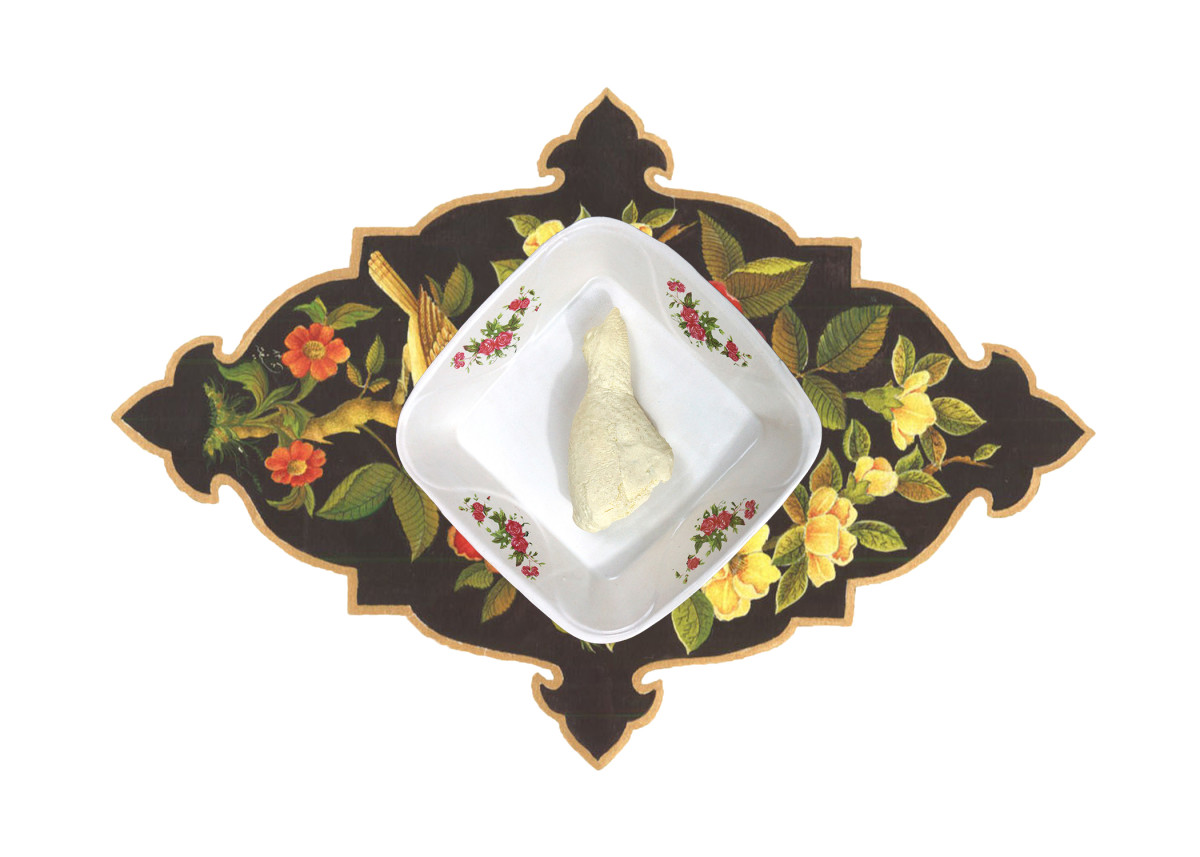
introductionThis is the second in a sponsored series of articles featuring member artists of Northeast Minneapolis Arts Association, a non-profit arts organization that works to build a more vibrant, diverse and economically healthy community through the arts.
Sculptor and ceramic artist Katayoun Amjadi’s basement studio space in Northeast Minneapolis’s Q.arma Building is well-appointed and cozy. Along one wall are shelves displaying some of her clay pots and figures, made with a mix of indigenous American and Iranian motifs, styles, and patterning. Further back in the room, work tables hold her various tools and materials, stacks of handmade ceramic dishware and cups; there are small piles of dog-eared books and sketch pads here and there. In the middle of the room are installation remnants and bits from works in progress, pieces dismantled into parts and awaiting completion.
A small gold couch is tucked against a back corner wall, with a tidy tea station set up just beside, and that’s where she leads me when I arrive for our visit. She offers a cup of Earl Grey in a charming, plainly handmade and roughly textured ceramic mug. Then, Amjadi begins to tell me about her practice, by way of her arrival in America some seven years ago.
She was born and raised in post-revolutionary Iran, and says the backdrop of intermittent violence and geopolitical unrest, throughout her childhood and adolescence, was simply a given. Her family is close-knit, progressive. She moved to the U.S. in 2009, but most of her loved ones still reside in her native Iran. Her artist statement explains: “Shortly after immigrating to the United States, she came to realize that what she had left behind was more than material belongings, friends, or family members. Rather, she found herself stripped away from the familiar cultural context that had once constructed her sense of Self.” She describes her post-immigration sense of self as a “hyphenated experience,” trying to reconcile both the “Iranian” and the “American” elements of herself, what they comprise singly and together, in the shifting sands of her evolving Iranian-American identity.
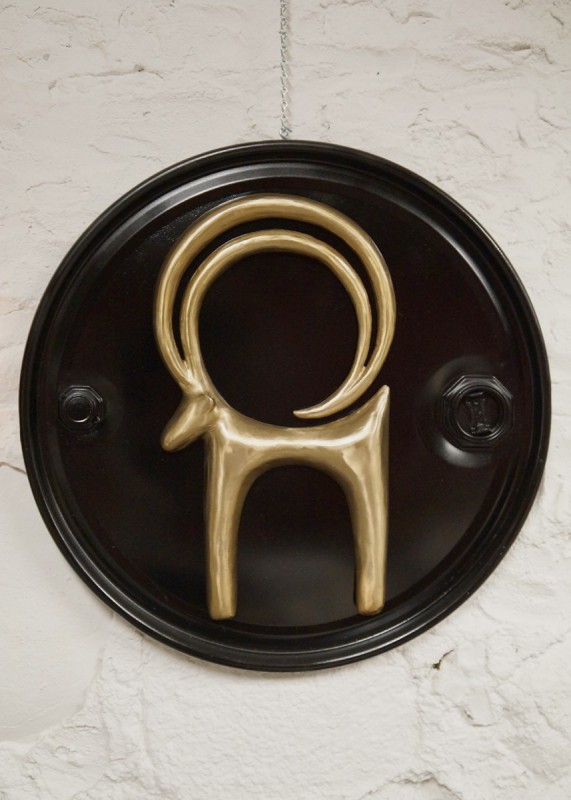
As we talk about the interplay of culture, gender, and politics in her artistic practice, she quotes the famous, late ’60s, feminist rallying cry: “The personal is political.” Amjadi says, for her, the two spheres have always been inextricably linked—her family life, her concerns as a young woman and a feminist, as an artist and student, as a political citizen straddling two cultures. Her interests straddle historical eras and cultural archetypes as well. Her work blends nationalist imagery and talismans of petro-industrial politics with ancient symbols and tropes—the nightingale and the rose, pomegranates and olive branches, stylized Persian ibex familiar from imagery found on ceramic beakers thousands of years old—for the sake of sly and thoroughly contemporary, post-colonial critique.
A sense of displacement and yearning for belonging, the uncertain flux of one’s identity over time, is something we all share. It’s just that, given her circumstances, those themes of “balance, synthesis, hyphenated identity” are all more distilled and immediately pressing in her practice.
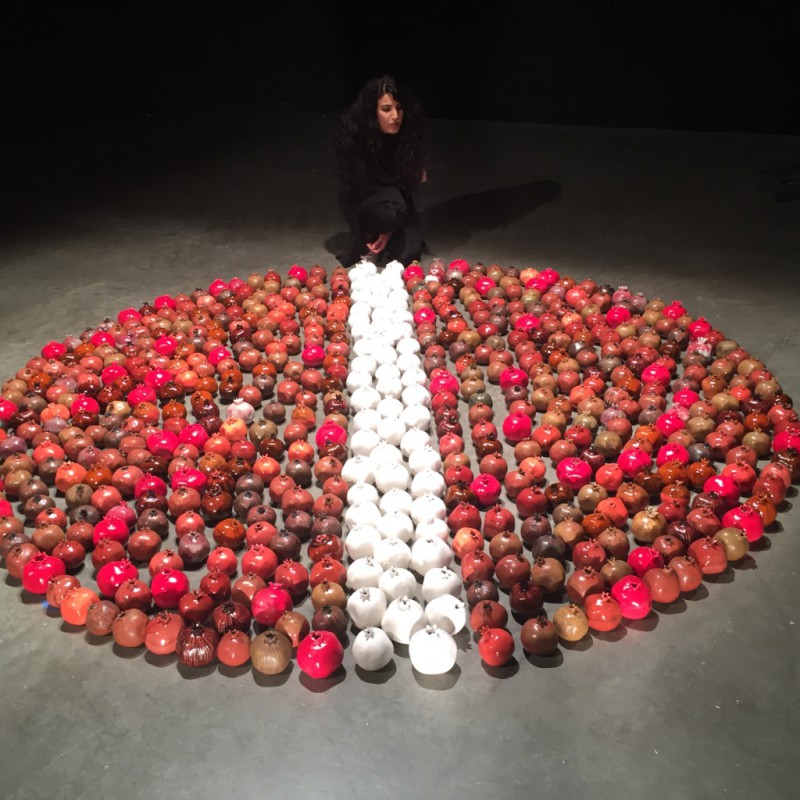
Pomegranates in cast porcelain from Blue Truck, 2014. 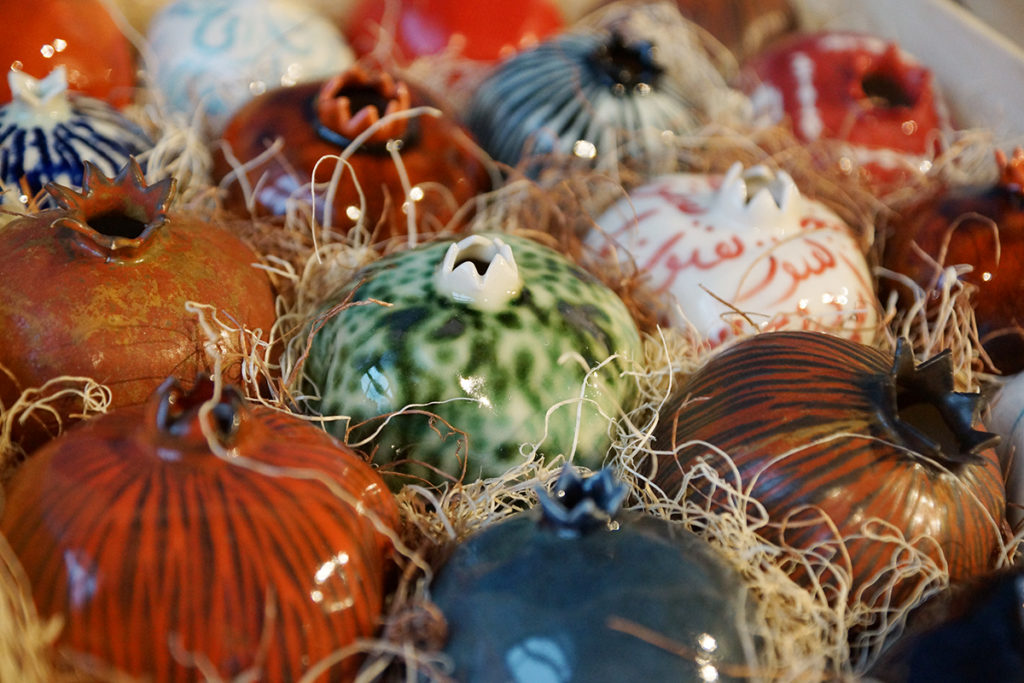
Pomegranates in cast porcelain from Blue Truck, 2014.
She says expressing in her art something of that neither-here-nor-there experience, her personal wrangling with self and identity in a new country—untethered from the fixed axis points of her formative cultural touchstones and language—is something she hopes resonates more universally, too. That sense of displacement and yearning for belonging, the uncertain flux of one’s identity over time, is something we all share, she observes. It’s just that, given her circumstances, those themes of “balance, synthesis, hyphenated identity,” she says, are all more distilled and immediately pressing in the conceptual underpinnings of her current practice.
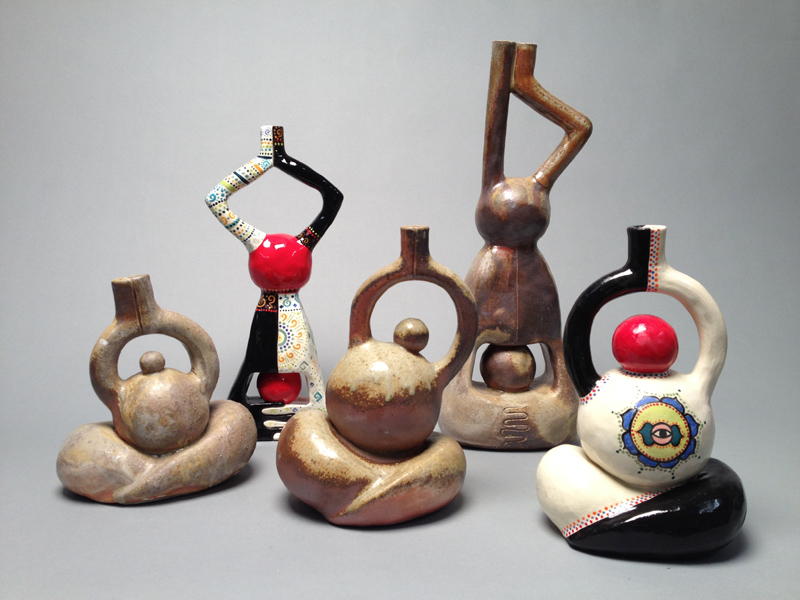
Look closely at the ceramic dishware and cups stacked on her shelves, and you see they’re molds cast from various Styrofoam take-out containers, delicately painted in a traditional Persian style with flowers and birds—elevating the disposable global tourism we partake in by way of “ethnic” restaurants into something thoughtful, almost sacramental. It’s a subtle, playful, but pointed nod to an immigrant’s experience of the American “melting pot.”
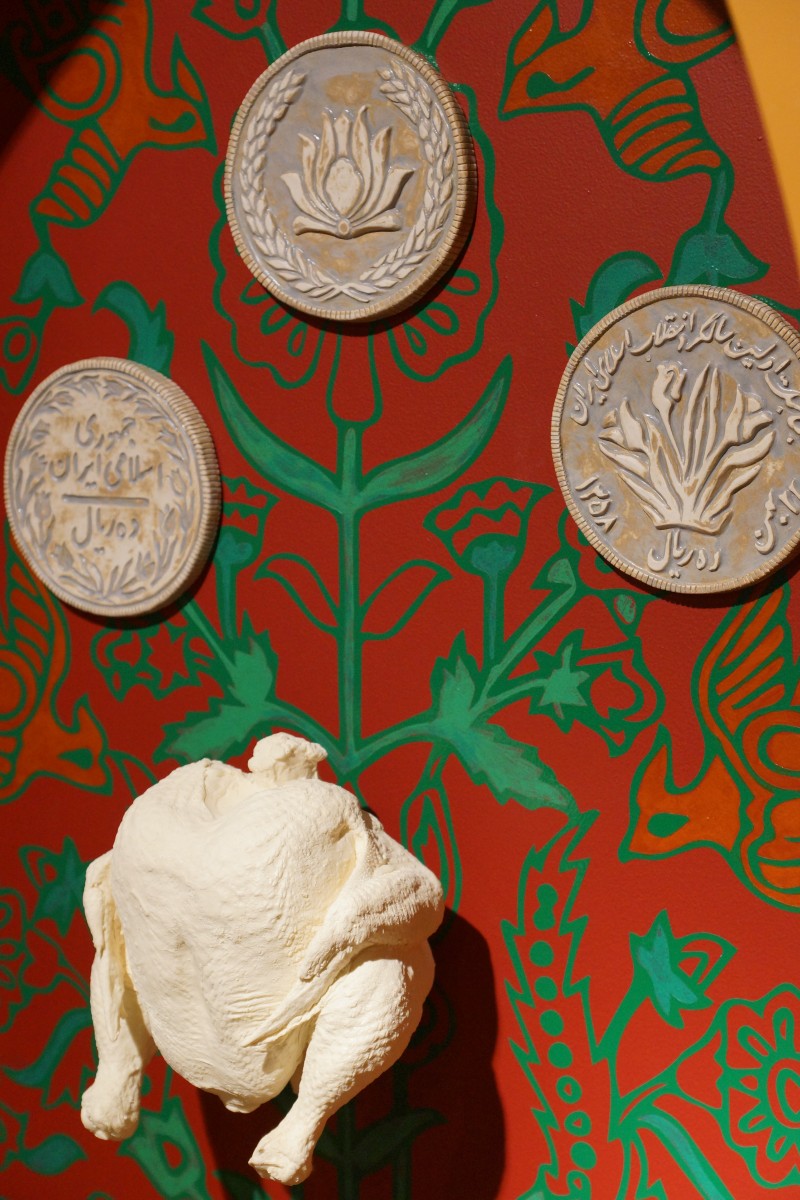
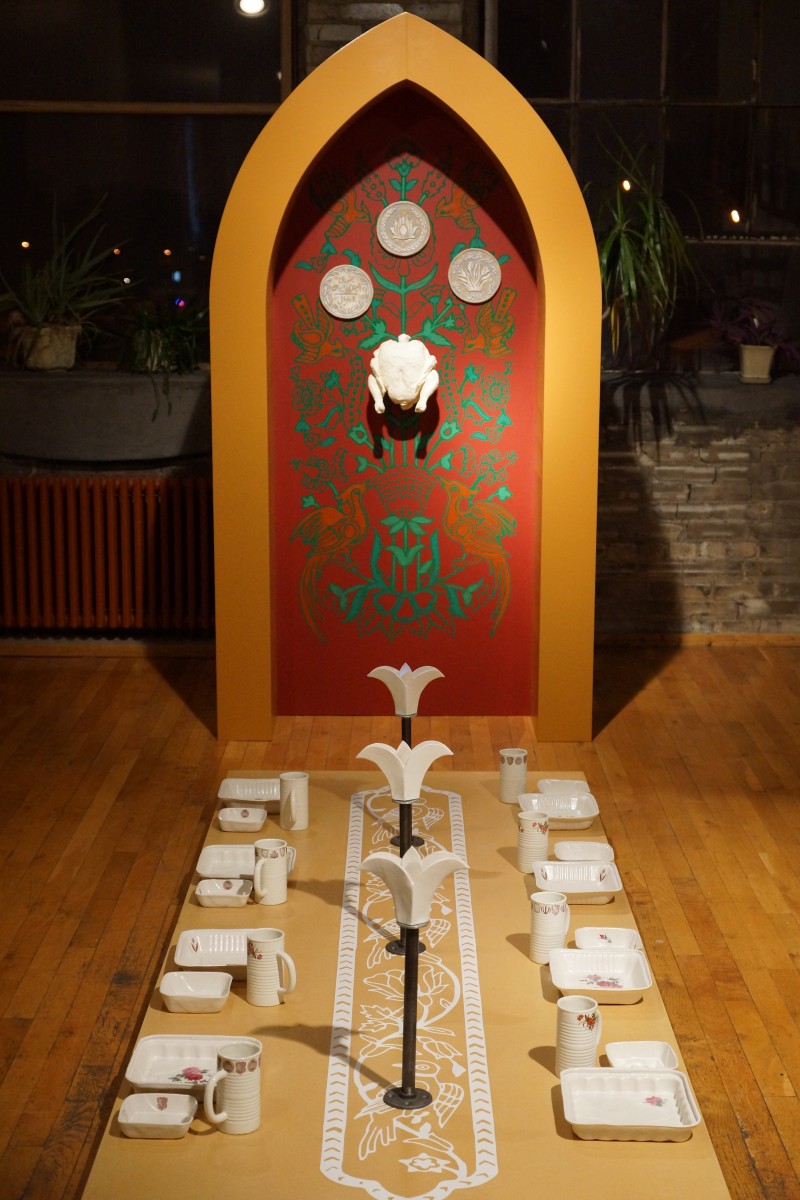
The sculpted chicken that appears frequently in her recent works—a carcass, sometimes just the legs, uncooked and not yet prettied up into dinner—likewise plays on a tension between lifeblood and death, violence and love. The bird’s place of pride in the table setting pays homage to shared meals, the warmth of communion with friends and family. But the flesh—the just-plucked and nubbly look of the naked skin, the flaccid folds of neck and tail—speaks to the violence embedded at the heart of the meal. Amjadi’s bird is the unrequited nightingale, singing songs to the thorn-spiked rose; it is the American eagle, denuded and vulnerable. Her bird is the bloody sacrifice that makes the sense of plenty derived from international trade—in oil, labor, money, political influence—possible.
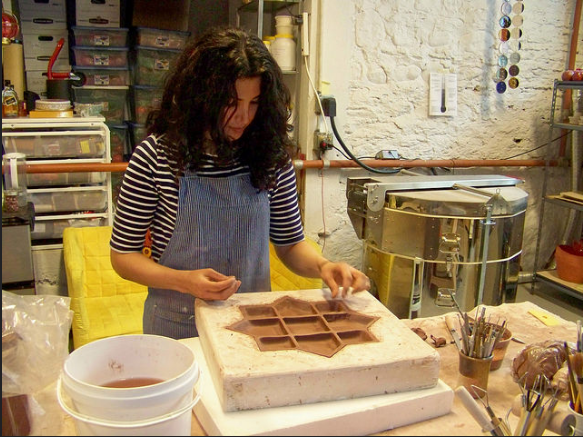
After moving to the U.S., she landed on a study of art in college, completing her Bachelor of Fine Arts degree at the University of Minnesota. She plans to continue there and will be working toward her MFA in the coming years. She’s created a number of video pieces; she also paints and has created memorable multimedia installation work. But she says she’s most at home working with clay. “It’s tactile,” she says. “It’s elemental, and that really appeals to me.”
She’s between large projects at the moment, finishing up work for an exhibition set to open this month at Art at 801 in Minneapolis. As she lets the new work percolate, she says, “I always go back to making pots and dishes; it keeps the beat of the work going, the muscle memory alive” until the new ideas come to fruition. The beginning stages are trial and error, she says; not all her ideas bear fruit, but the making and the ideas are so inextricably linked, she aims not to censor herself in the process. “The object will tell you whether it merits further investigation or should be set aside,” she says, “but, first, I need to have my hands in the clay.”
Related information and links: Life | Identity | Existence | All or None—including work by artists Katayoun Amjadi, Qian Liu, Jane Powers, and Mayumi Amada—opens at Art at 801 gallery Saturday, June 4 with a reception from 6 – 10 pm. The show will be on view through September 2016. See more from the artist and keep track of upcoming projects and shows via her website, www.katayoun.com.